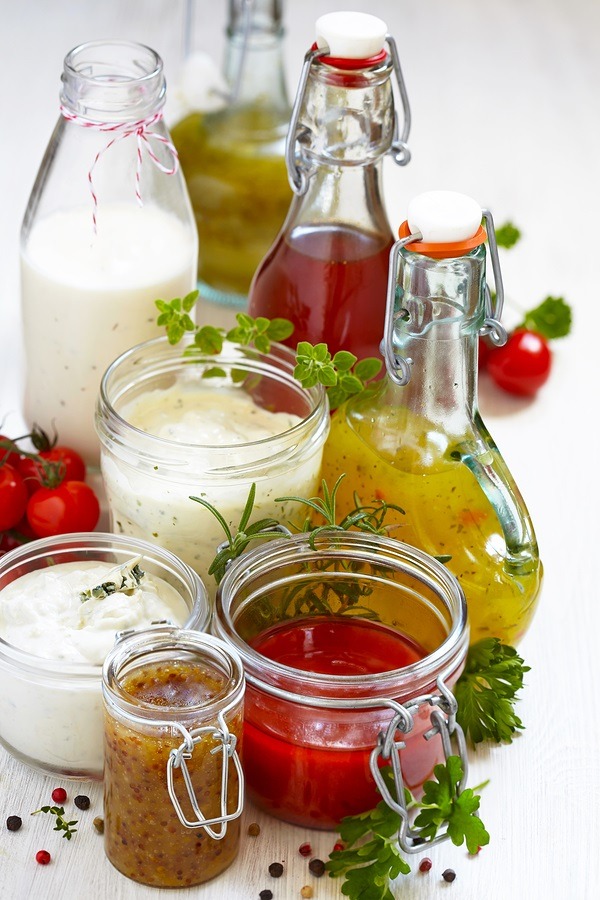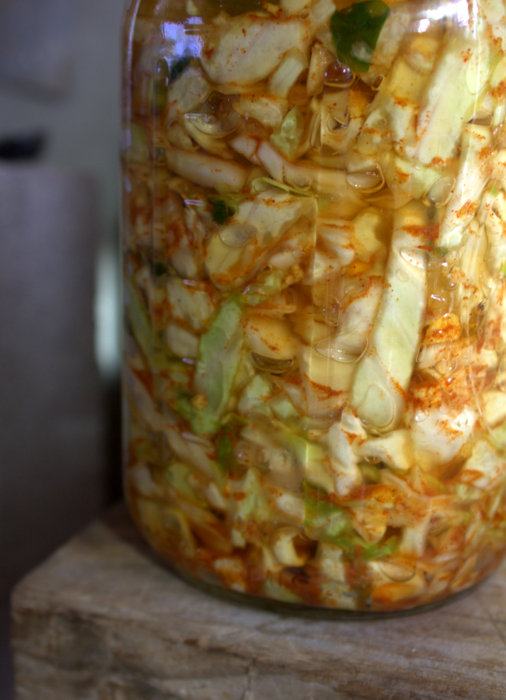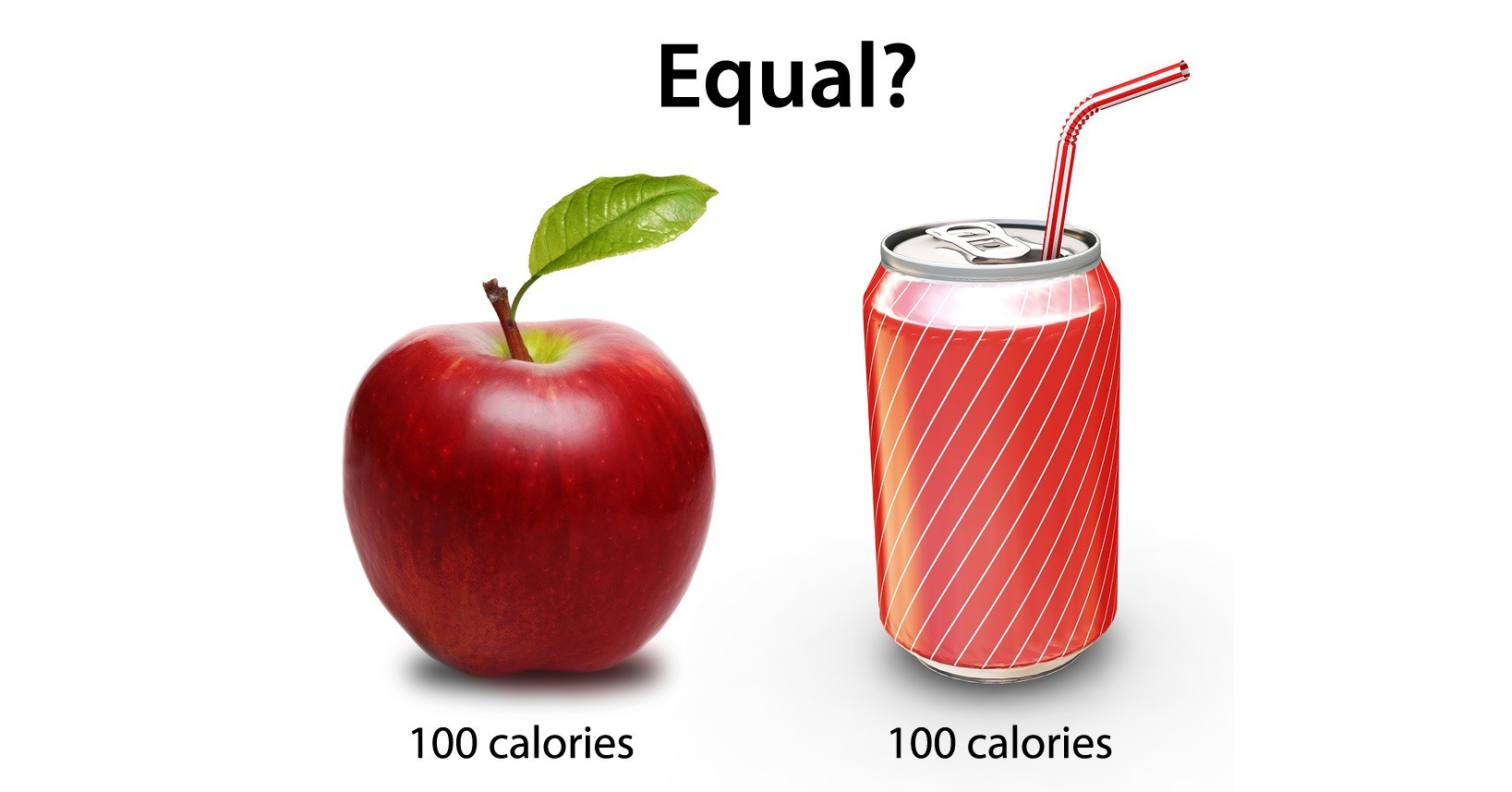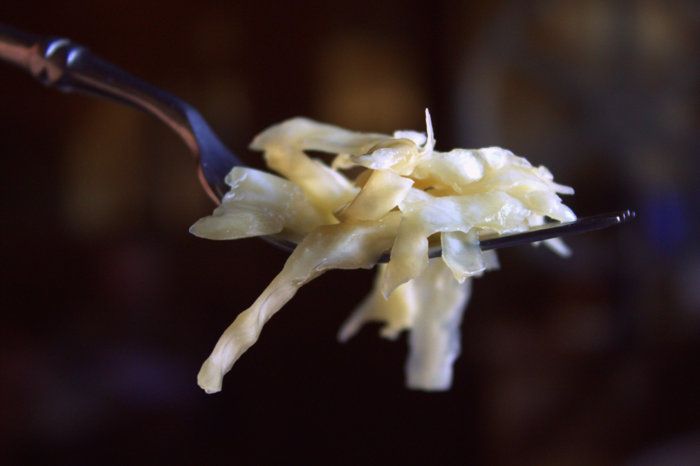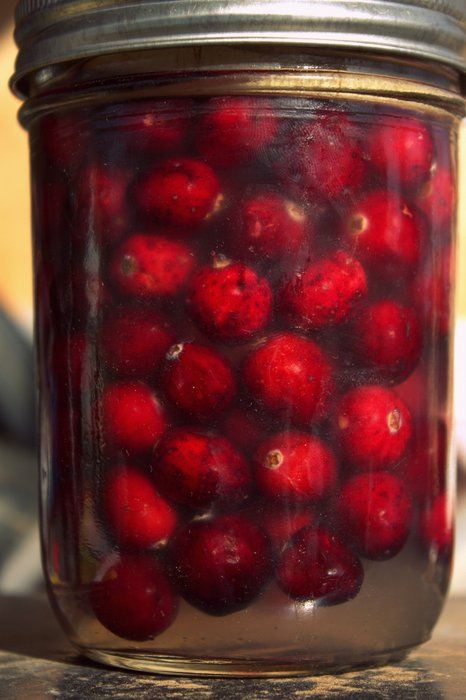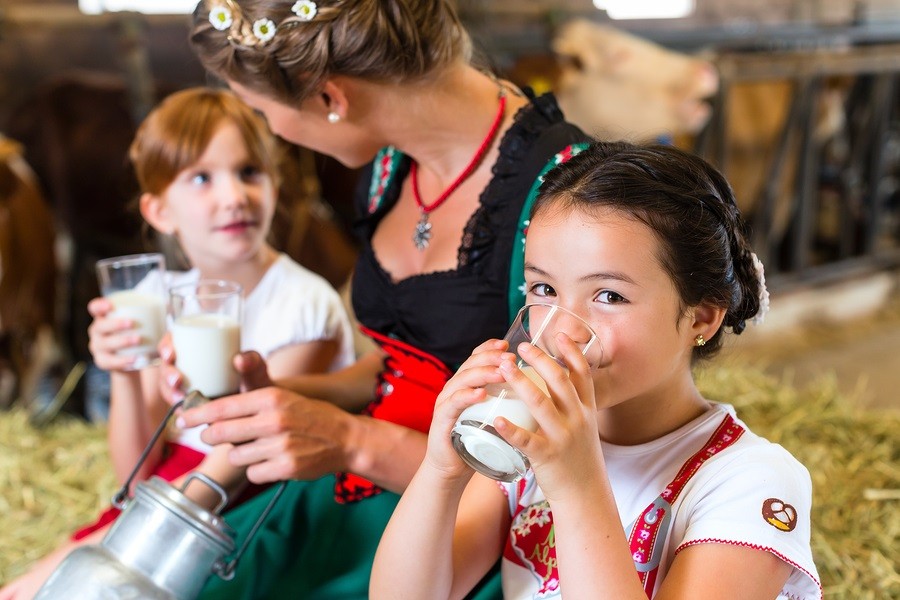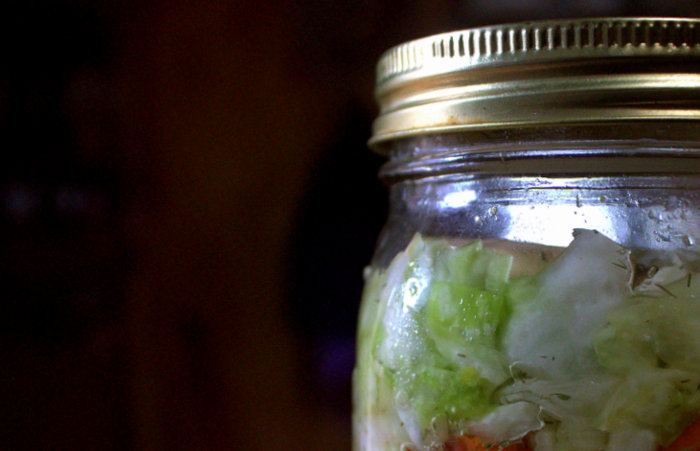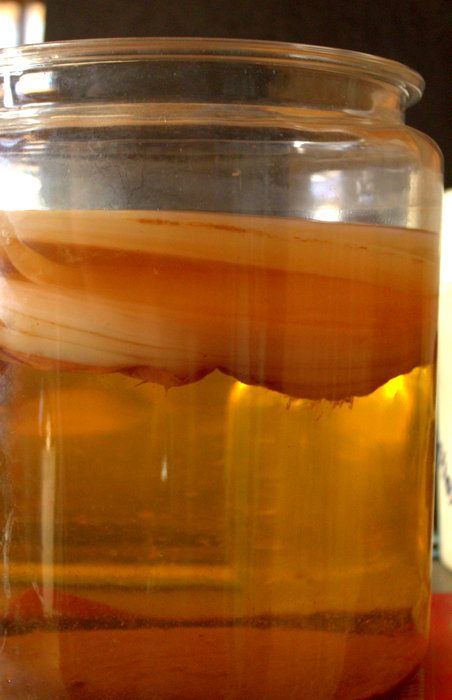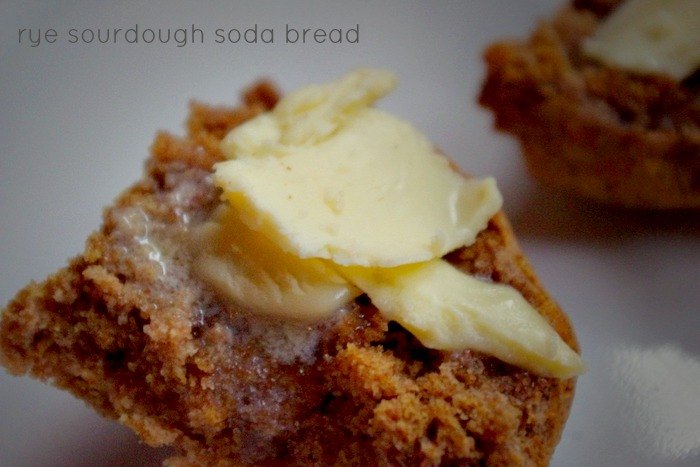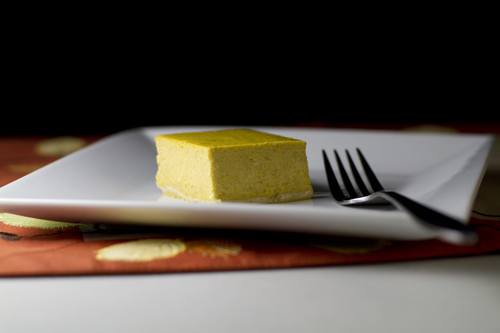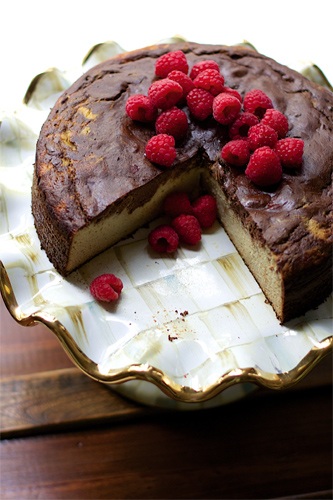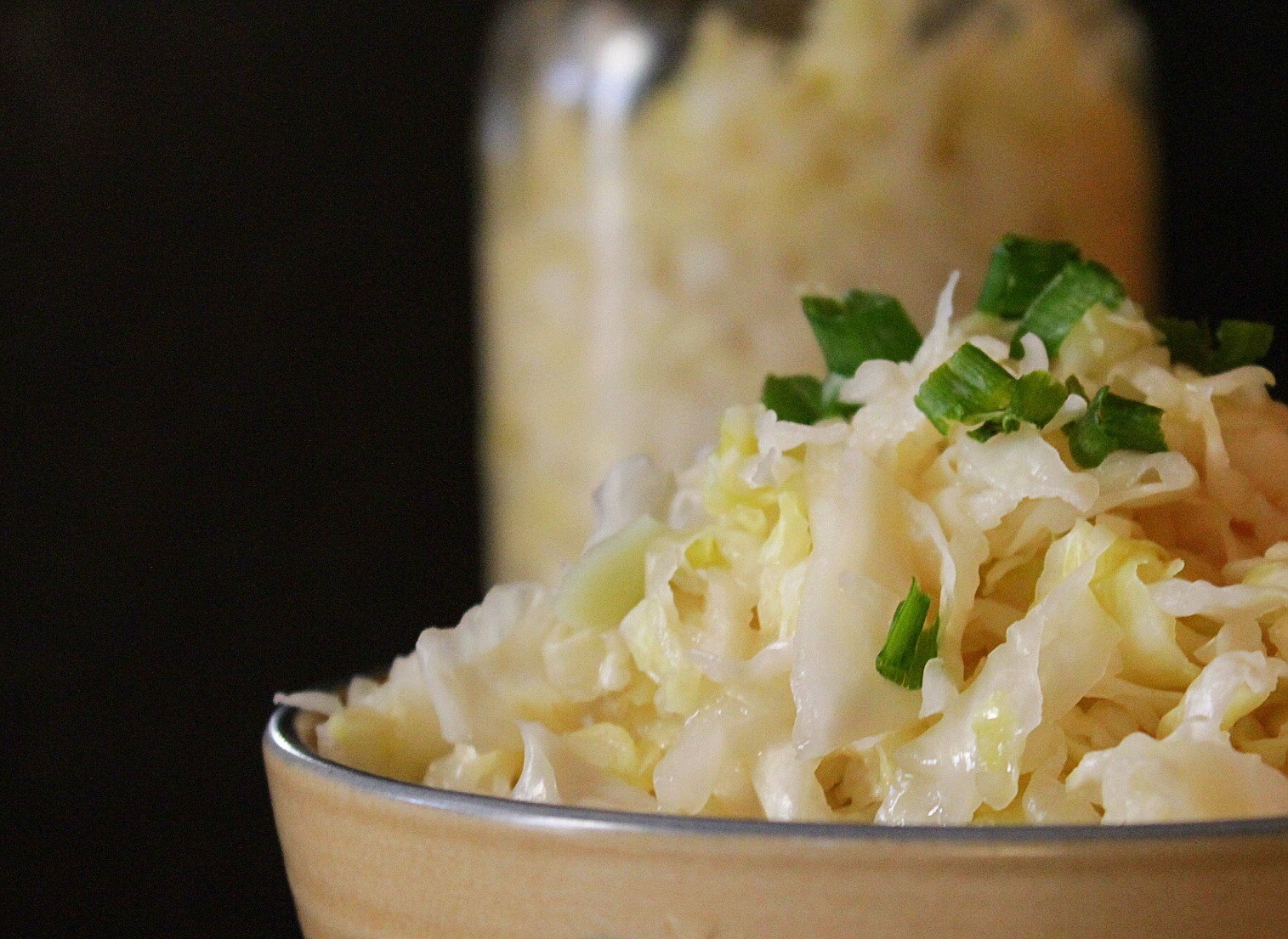News regarding traditional wisdom and native diets regarding nutrition.
How to Make Fermented Salad Dressings
Serving salad is a common means of adding enzymes and freshness to our meals. Surely none of us can argue with a big plate of fresh, organically grown produce! But, might we improve upon it by the addition of a salad dressing teeming with enzymes and probiotics? There are a few options for creating a salad dressing that contains live, active cultures that you can prepare in your own kitchen.
Study: Doubling Saturated Fat in Diet Does not Increase Saturated Fat in Blood
2014 will undoubtedly be remembered as the year the dietary belief that saturated fats are bad and lead to heart disease began to crumble in the mainstream media. This "news" of course is not "news" at all for those of us in the alternative media, as we have been saying this for well over a decade now. The research in the scientific literature showing the health benefits of saturated fats in the diet has been around for even longer. What should be carefully noted in the mainstream media's reporting on saturated fats, however, is that it is almost exclusively related to dietary advice, and the sale of certain groups of food high in saturated fats, such as butter. The reason for restricting the change in the saturated fat myths of the past 50 years or so to only dietary advice is most likely due to the fact that processed food companies (such as Big Dairy) can still produce products that take advantage of this shift in consumer trends, as consumers wise up to the fact that when you restrict saturated fats in the diet, you tend to replace them with refined carbohydrates, which are linked to many health problems that are historically blamed on saturated fats. Undoubtedly, the processed food industry's answer will be more highly processed saturated fatty foods now. Where the change in the saturated fat myth is still not applied in the mainstream media is in the lipid theory of heart disease related to cholesterol. This is a holy grail in the pharmaceutical industry that supports a hundred BILLION dollar drug industry to lower people's cholesterol levels. So the cholesterol myth will die a hard death. Sadly, it will live on to bring in billions of dollars in pharmaceutical profits for the foreseeable future. The latest study showing the fallacies of the saturated-fats-are-bad belief system comes from Ohio State University.
Coca-Cola Is Getting into the Milk Business
There is nothing natural about this milk. They’ve managed to increase its protein and calcium content by separating the milk into its five components (water, butterfat, protein, lactose, and vitamins and minerals), then removing the lactose altogether and recombining the rest in different proportions. More information about their process is unavailable since it falls under “proprietary” secrets. We wonder if sacrificing good fats, vitamins, and minerals are an appropriate price for increased protein and calcium content. Note that the calcium has been added without including important co-factors like vitamin K that move calcium into the bones and keep it from damaging the heart.
A Simple Homemade Kimchi
As one of the most well-known fermented vegetables, besides sauerkraut, kimchi has both a large following and a long history. One bite of the sour, spicy, crunchy condiment will reel you in for good. It’s no wonder it has been one of Korea’s most beloved foods for generations! Kimchi has been touted as one of the most healthful foods in the world. And it’s no wonder as those flavors that give kimchi its distinct flavor also pack a nutritional punch. Here's how you can make it at home.
How the Calorie Theory of Obesity and Disease has Harmed Public Health
One of the most damaging theories in human nutrition espoused by government authorities such as the USDA, is that all calories are equal, and that watching one's calorie intake has a positive effect on one's health. One look at the nation's health and rising obesity rates should give us a pretty good clue that this theory is false. A recently published article authored by Dr. Sean C Lucan from the Department of Family and Social Medicine, Albert Einstein College of Medicine/Montefiore Medical Center in New York, and Dr. James J DiNicolantonio from the Department of Preventive Cardiology, Mid America Heart Institute at Saint Luke’s Hospital in Kansas City, exposes the fallacies of such thinking and public policy, and its harm on public health.
Three Tips for Better Homemade Kraut
Making fermented vegetables is both a science and an art. Understanding the biological processes behind vegetable fermentation can take you a long way in making simple, delicious batches of kraut. But it is the practice of making them again and again that teaches us what goes into the best batches of these living foods. It is true; each batch of sauerkraut is a little different than the last. The condition under which it is made greatly affects the end result, but so does the vegetable itself and its origin. Microbes from the soil make their way onto a head of cabbage and then into your final product. In order to make the most of this process, it is helpful to understand how to manipulate the process to create the best kraut.
Seven Ways to Add Fermented Foods to Your Thanksgiving Table
Sitting down to a big meal with family and friends can be a source of great joy and wonderful memories. By adding fermented foods to your table you provide enzymes and probiotics to aid in the digestion of those ubiquitous and comforting Thanksgiving foods. The microorganisms in these foods are wonderful; and the flavors created through fermentation are unparalleled. Layering the meal with these foods, or simply adding one or two, keeps things both easier on the belly and more interesting for those unfamiliar with the practice of home fermentation. There are many ways to incorporate these foods into your Thanksgiving meal. Sweet treats are prevalent this time of year and many of us will spend a bit of time baking during this week of Thanksgiving. There are a few ways to add culture even to the dessert table.
A Lower-Carb Tasty Thanksgiving Meal
Turkey, stuffing, mashed potatoes, and gravy - cranberry sauce, pumpkin pie, and dinner rolls - these are the traditional foods of Thanksgiving. They are hearty and comforting, filling and tasty, carb and sugar-laden. Thanksgiving might be a feast day in which we give thanks, but for those whose health dictates a low-carb diet, Thanksgiving might seem like nothing but a plate of turkey. Here’s a little secret, though: the familiar flavors of your Thanksgiving favorites can be had without piling on the carbs.
Study: Fresh Raw Cow’s Milk Protects Infants from Childhood Infections
More research continues to come in from Europe showing the many health benefits of consuming milk fresh from the animal in its raw state. Such information is vigorously opposed here in the U.S. to protect the large, subsidized processed milk industry. Raw milk is so popular in Europe that many countries allow you to buy it from refrigerated vending machines that are stocked fresh each morning. A study from 2014 appeared in the Journal of Allergy and Clinical Immunology. The study followed 983 infants from rural areas in Austria, Finland, France, Germany, and Switzerland, for the first year of life, covering 37,306 person-weeks. Acknowledging that breast milk is the best way to build a child's immune system in the first year of life, the study looked at cow's milk consumption from both processed milk and fresh raw milk.
Probiotics and Prebiotics for the Microbiome
Whether we want to think about it or not, our bodies are actually largely made of up bacteria. One study found that we are comprised of ten times more bacteria than human cells. So it may even be an understatement to say that paying attention to our microbial makeup is critical. Defining probiotics is actually a bit tricky, as many see them as a supplement or a pill. Probiotics are not confined to something you have to purchase and swallow. In fact, some are finding that supplemental probiotics are not nearly as effective as naturally occurring beneficial microbes. Learn more about rebuilding your microbiome with probiotic and prebiotic foods.
Gluten Free Thanksgiving Menu Ideas You can Make at Home
Celebrating the Thanksgiving holiday is just as much about food these days as it is about being thankful, so menu planning is key to a successful feast. Discovering how to plan a completely gluten free Thanksgiving meal (free of strange substitutions and not lacking in flavor) is definitely something for which to be thankful.
Homemade Kombucha: a Fermented Tea Tonic to Improve Your Microbiome
One of the beauties of fermentation is how very diverse the foods created through the process can be. Not only does this give us a variety of delicious ways in which we can partake in the enzymes, probiotics, and other benefits of fermented foods, it also gives us a variety of microorganisms, as each of these foods contains their own microbial identity. Indeed, eating fermented foods of all varieties is a good way to guarantee a variety of microbes in your diet. Drinking fermented beverages is a tasty way to add fermentation to your meal. Kombucha tea, a fermented sweet tea, is one such tonic.
How Long did YOUR Ancestors Live While Eating BACON, LARD, & WHOLE MILK?
My Great-Grandma was a tough ol’ chick. She ate real, traditional food; could cook up fried chicken from scratch. When I say “from scratch” I literally mean “from scratch”. As in, she would kill a chicken, dress it, coat it with flour, and fry that baby up in a big ‘ol frying pan of lard. She was an amazing woman, my great-grandma. That woman wasn’t afraid of anything. She’d sleep out in the dark woods with hungry bears if you dared her to. She was that tough. Our ancestors didn’t worry about heart disease, cancer or diabetes. They didn’t fear Alzheimer’s or Parkinson’s disease. These diseases were so incredibly rare before the 1900s, that they didn’t need scientists to solve any mystery. There was no mystery! Our ancestors simply ate food – real food, and were nourished. Sure, there was illness and life was not perfect. But chronic degenerative diseases rates were incredibly low. The leading cause of death before 1900 was one of four things: infancy death, death from childbirth, death from infections, & death from accidents. Today, the leading causes of death are heart disease & cancer. Clearly, there’s something we need to change.
How to Use Coconut and Almond Flour Together in Gluten Free Baking
As gluten free diets have gained in popularity, almond and coconut flours have become trusty staples in many gluten free pantries. While coconut flour is the fiber from coconut meat after nearly all the oil has been extracted, almond “flour” is really just almonds ground up into a fine meal, and is also marketed under the name “almond meal”. Considering how mild, pleasant and versatile almond flour is in terms of taste and texture, it has become a very valuable addition to any baking pantry, gluten free or not. Read more to find out how to use these two gluten free flours together, and how to easily make your own almond flour.
Sourdough: A Traditional Way to Prepare Grains
Traditional foods are those that have been eaten for generations by those who have eschewed modern industrialized foods. They have stood the test of time, producing generations of vibrant parents and vigorous children who have lived without the modern degenerative diseases so prevalent in our western world. And so, when we seek out a traditional foods diet for both health and the sustainability of our food system, we must ask ourselves where certain foods fit into this picture. How were they prepared before industrialization? Do they have a place in history? Over the past decade, bread has taken a beating in the health food arena, and for good reason. Most bread made today is devoid of many of the characteristics of traditional bread. Sourdough bread is slow bread, traditional bread, and bread with a depth of flavor that cannot be imitated.
Repairing your Microbiome: Making Kefir at Home
Cultured dairy is a traditional food in many cultures. When refrigeration isn’t available fresh milk can only keep for a couple of days before it spontaneously cultures, as in sour or clabbered milk. Adding a starter culture – be it from a previous batch or other source – has long been the method of creating consistent flavors and textures in ones cultured milk. Milk kefir is one of these cultures. Thought to originate in the Caucuses Mountains, this culture is added to fresh milk and allowed to culture for 12-24 hours, sometimes even longer, and results in a tangy, flavorful milk with the consistency of a pourable yogurt. Milk kefir has many health benefits, and can be made at home.
How to Make a Gluten Free Cheesecake
Cheesecakes are a classic dessert, with many different flavor variations and types. For those on a gluten free diet, finding a 100% gluten free cheesecake recipe that doesn’t skimp on flavor or texture, and still blows you away, can be a bit of a challenge. Many popular cheesecakes like the New York style use a bit of flour in the filling, and the classic graham crust is hard to replace. Even though gluten free grahams are available to purchase, they are loaded with highly processed ingredients and are better off not being touched. Meanwhile, the alternative, making them yourself, is extremely time consuming. There is however, a very easy solution: make a shortbread crust and nix the gluten flours. Shortbread crusts are light, buttery, very quick and easy to make, and compliment any flavor of cheesecake. Here’s how you make one.
Simple Fermented Carrot Sticks and the Two Types of Fermented Vegetables
Most of us are familiar with sauerkraut, kimchi, and cucumber pickles as forms of fermented vegetables. Or we are, at the very least familiar with the store-bought vinegar-brined modern day versions of what once were lactic acid fermented vegetables. But you can ferment just about any vegetable, turning it into a lively probiotic-rich snack, condiment, or enzymatic addition to your meals. Here is a simple recipe you can make at home for fermented carrot sticks.
How to Use Raw Honey in Place of Sugar in Baking
Raw honey is one of the healthiest sweeteners readily available for use in baking. Honey is a much better choice than processed sugar. Granulated sugar made from cane sugar is actually is a natural product. However, most types of granulated sugars in the market go through a very refined processing method which strips out most of the natural nutrients. In addition, granulated sugar from sugar beets is more than likely from a GMO source. Therefore, you’re better off using raw honey, which is a whole food that in its natural state needs no further refining. And its healthier too! The information here will show you how to replace sugar in your baked goods with raw honey.
How to Make Your Own Sauerkraut
There are many ways to preserve food these days. Freezing is popular for its convenience. Canning is gaining resurgence, and rightfully so, for its place in a local and sustainable food economy. Drying fruits and vegetables continues to be a simple way to put food up, especially in hotter, drier climates. And then there is lactic acid fermentation, also known as lacto-fermentation. If you’ve ever had unpasteurized sauerkraut or true sour pickles, then you’ve eaten fermented vegetables. These are hard to come by, though, in their true raw form so it is helpful if you know how to make them at home. This article will show just how easy it is make your own raw sauerkraut at home with only 2 ingredients.




